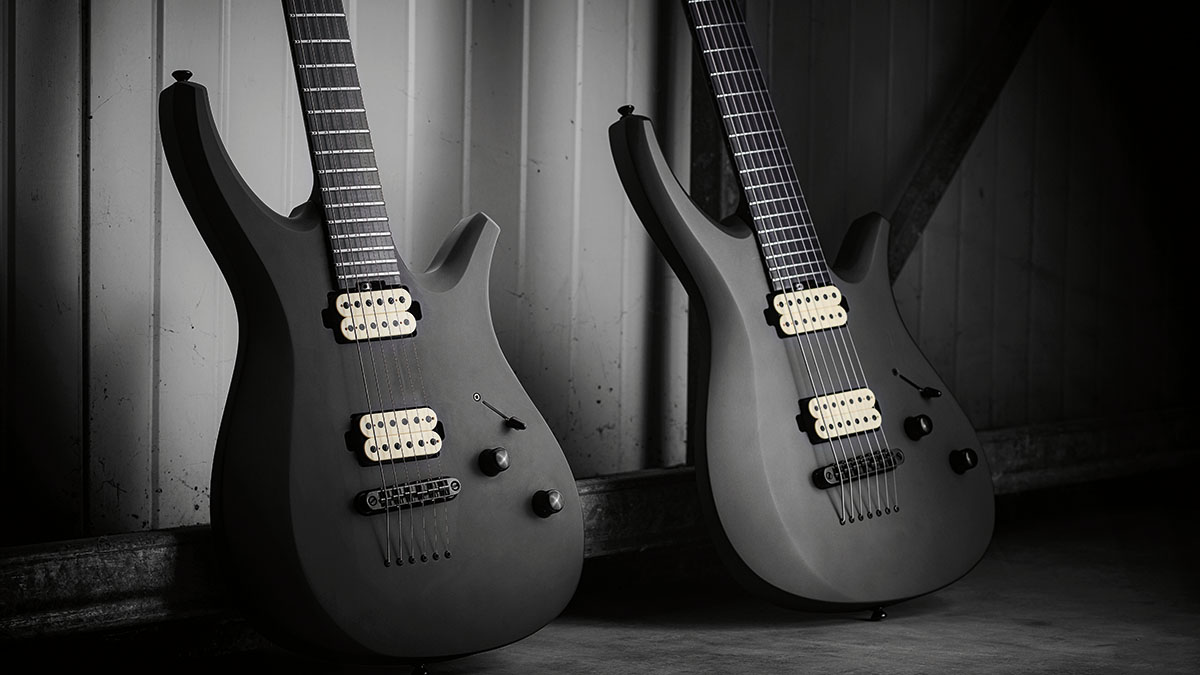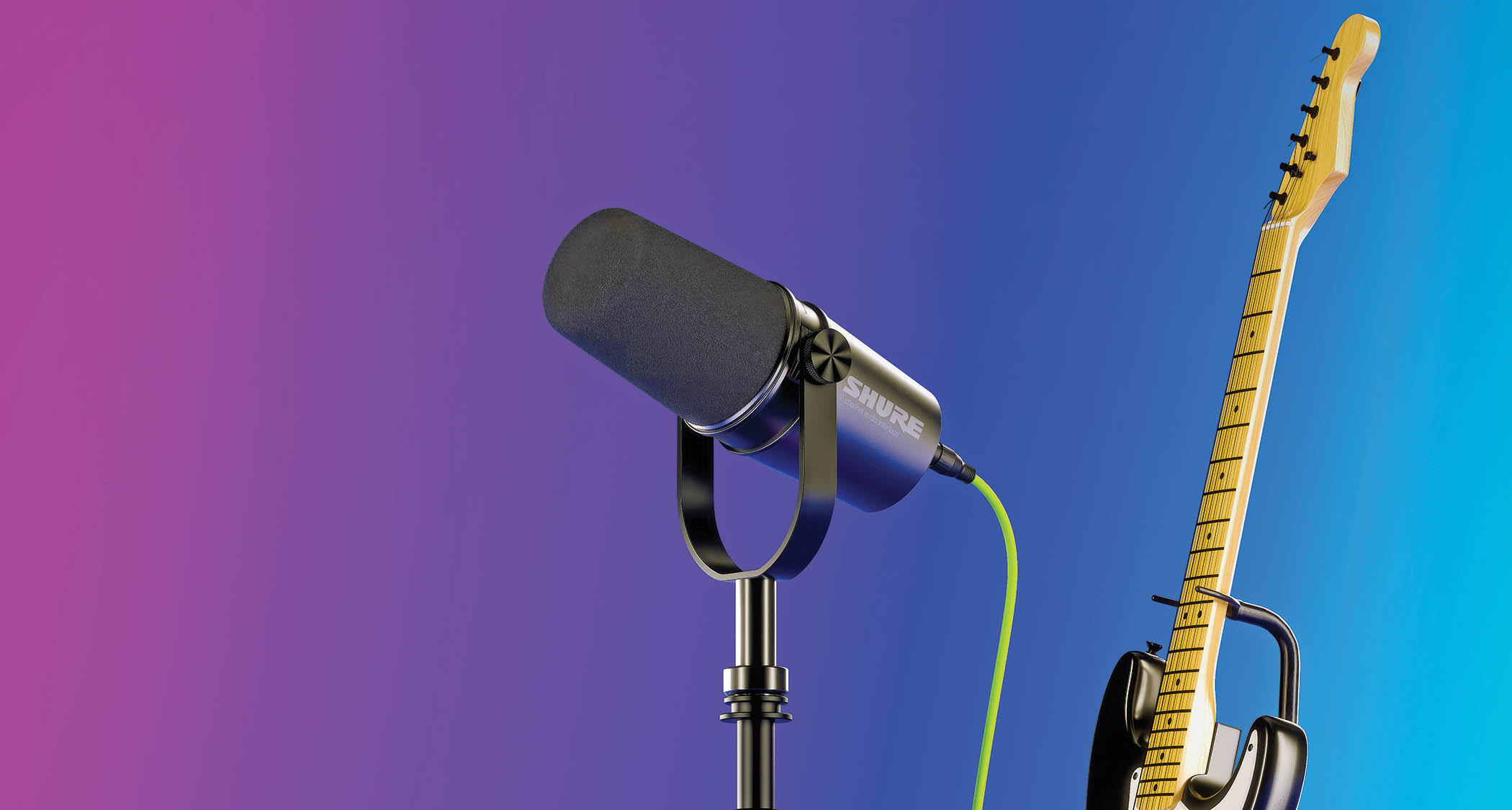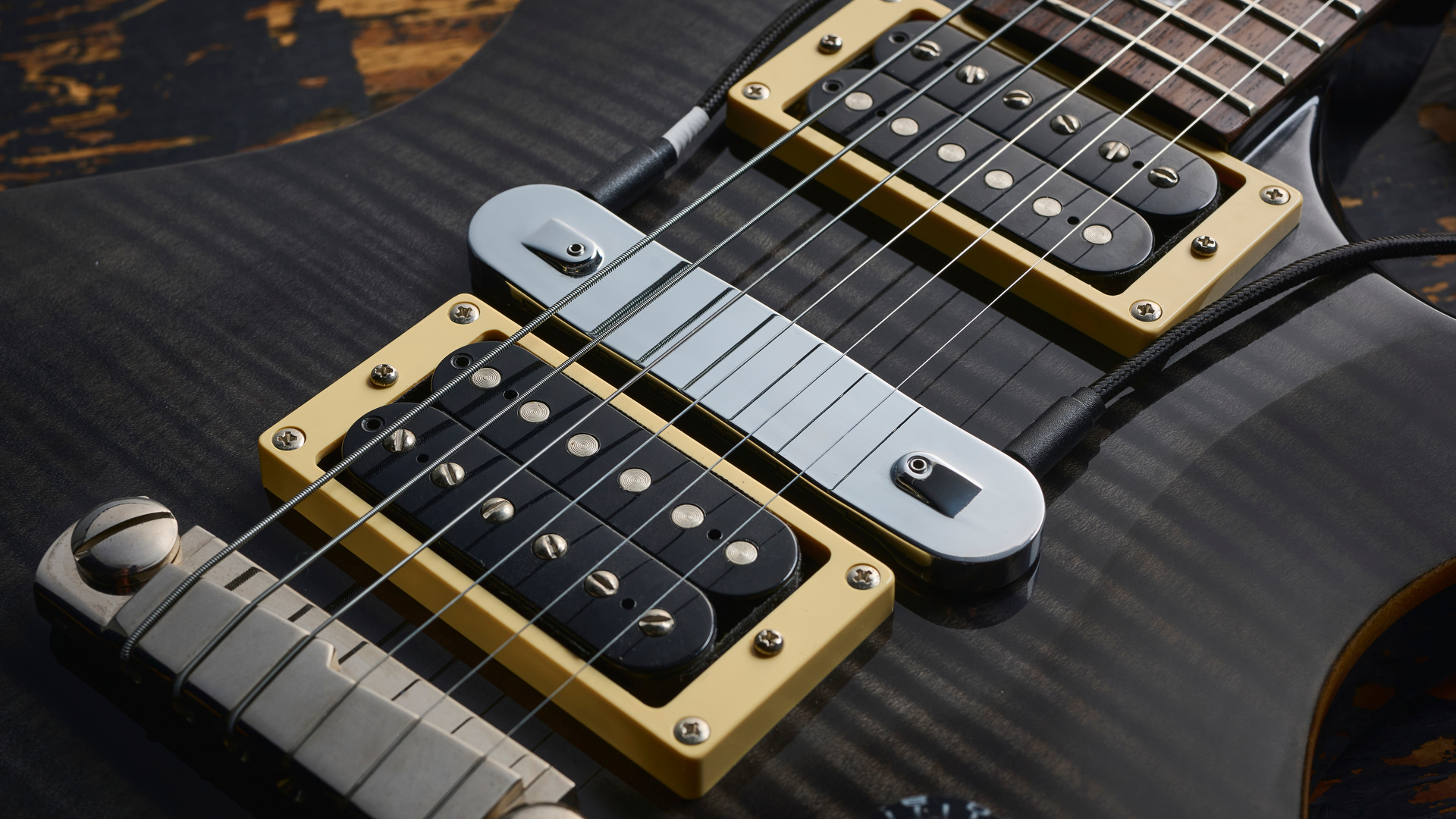Guitar World Verdict
Undeniable build quality, smart design and versatile sonic options make the Oryx a compelling instrument for progressive guitarists.
Pros
- +
Cohesive player-led design.
- +
Exceptionally detailed and considered build.
- +
Surprisingly versatile pickups, especially paired with the series/parallel Free-Way switch.
Cons
- -
By design, it’s aimed at the ‘progressive’ player.
- -
It’s not cheap.
You can trust Guitar World
Think of Manson electric guitars and you invariably imagine some tech-loaded instrument that satisfies the likes of Matt Bellamy. Of course, its designs are not all so expansive – or expensive – and, via a hook-up with Cort, instruments such as the Meta Series start around £569.
Moving up from those, the MA Series is fabricated in the Czech Republic then assembled and finely set up at Manson Guitar Works HQ in Devon.
Up until now, only a very limited number of special models have been made completely on these shores, but the new ORYX – which is available as six- and seven-string models – changes that as the first unlimited model to be made entirely in the UK.
Here, we’re looking at the final production prototype. The new instrument is visually very different from the Manson guitars we’ve got to know over the past decades.
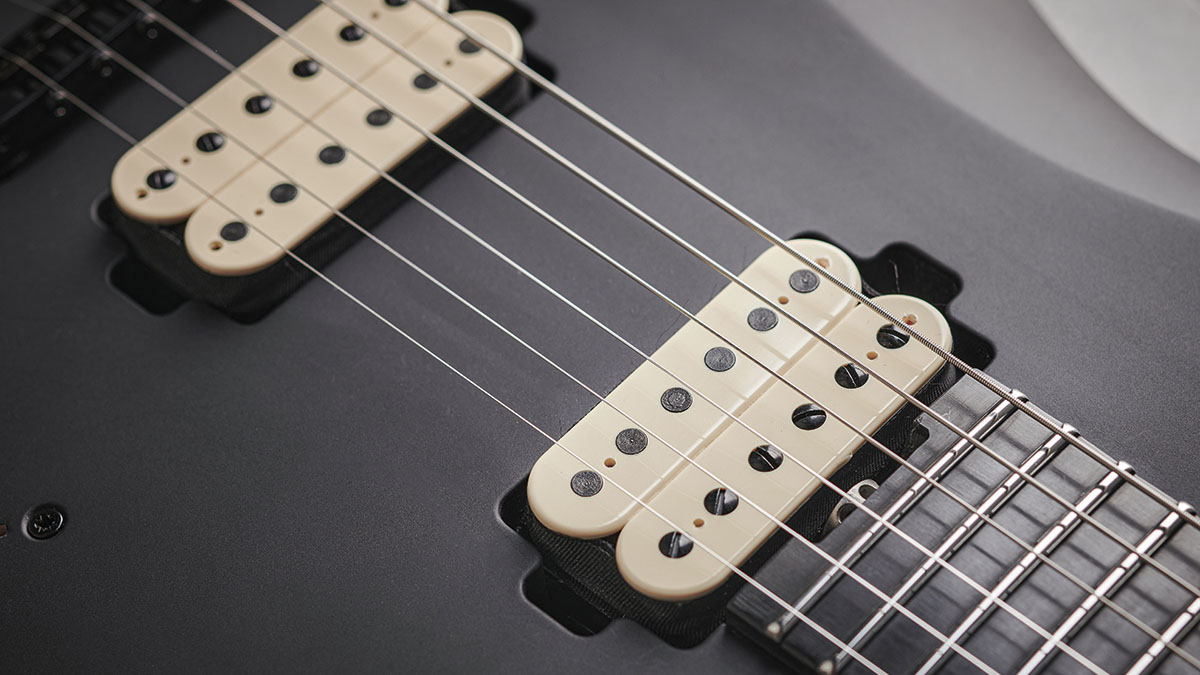
The single-cutaway Telecaster-esque body with its extended shoulder of the MB Matt Bellamy models and the more conventional style of the MA guitars is switched here in favour of what seems like a very function-led double-cut design with a long upper horn that extends to just about the position of the 12th fret.
A much smaller and slightly out-turning treble horn enables very easy access to the upper-position frets, helped by the cut-down heel.
It’s effectively a simple slab body made from two-piece alder with quite large chamfers to the forearm area and a ribcage cut on the back. The horns have similar-style chamfers, and the wood-working, not to mention the faultless satin black finish, is superbly done.
It’s one of those rare designs that really doesn’t make you think of something that was designed before 1965. Which is all a part of the concept: it’s a forward-looking guitar yet it comes across very much as a working tool.
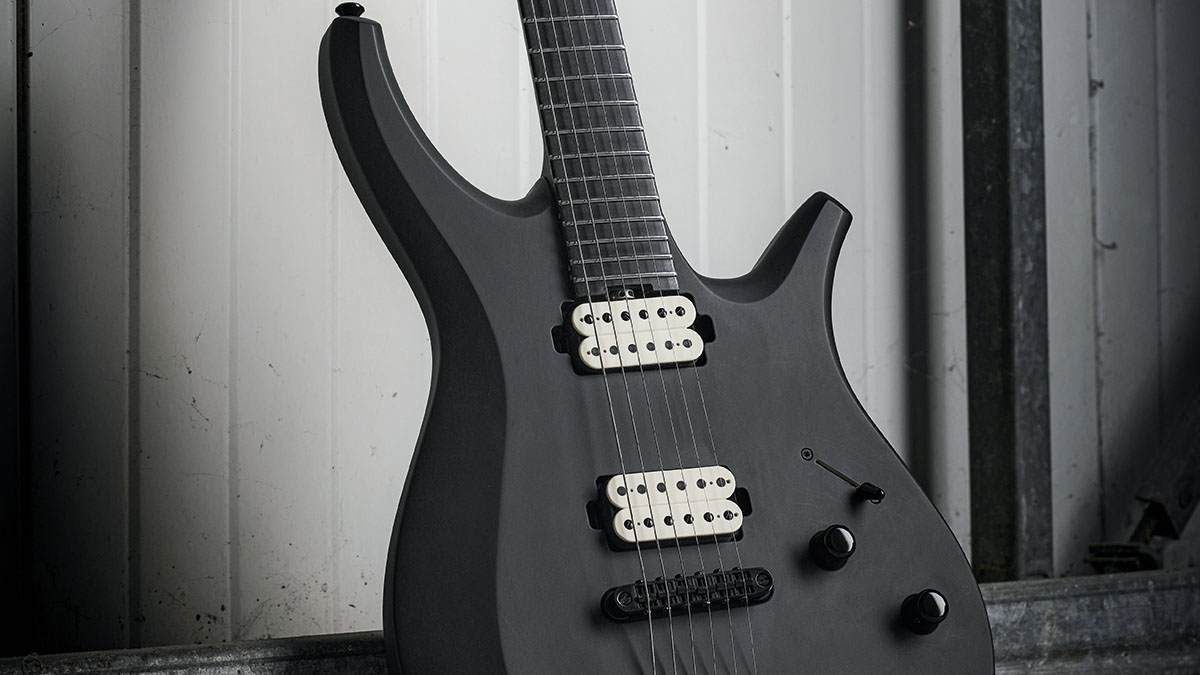
That satin black finish also covers the neck back and headstock; there’s no visible wood on the guitar at all. Although underneath you’ll find a hard maple slab-sawn neck that’s faced with a jet black Richlite fingerboard and superbly fretted with Jescar stainless-steel frets on the 305mm (12-inch) face.
There are no visible fret tangs on the fingerboard edges, which have been smoothly rolled, and there are no face markers, either, just glow-in-the-dark side dots. Typically for a Manson design, the truss rod is adjustable via a spoke wheel at the body end of the neck.
Hardware is all black-plated and quite minimal in that there’s no tailpiece. The strings anchor Tele-style in recessed cups at the back and gently slope up to the Tone Pros tune-o-matic. This is recessed into the body, giving a relatively low string height above it – just over 12mm from the top of the G string to the body face, for example.
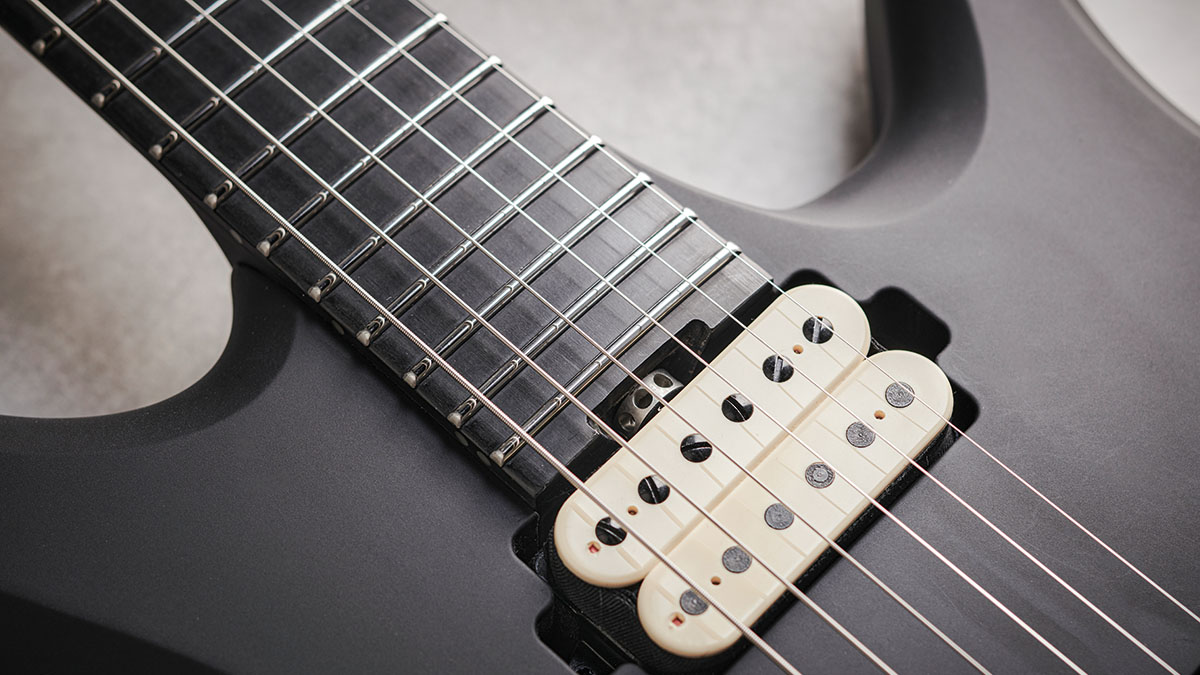
You begin to realise how every small detail has really been considered, something we discuss with Manson’s head luthier, Tim Stark, in the pages that follow this review.
The reverse headstock angles back so there’s no need for any string trees. The strings pass in a straight line to the rear-lock Gotoh tuners – slightly recessed into the headstock face – which have been modded with knurled aluminium knobs and create a super-smooth, almost fine-tuning feel.
Not that we used them much; this is a very stable guitar, tuning-wise. You’ll also notice a soft-rubber string dampener directly behind the perfectly cut Graph Tech nut to remove any ‘dead string’ overtones, especially with high-gain playing, which is the primary aim of the design, of course.
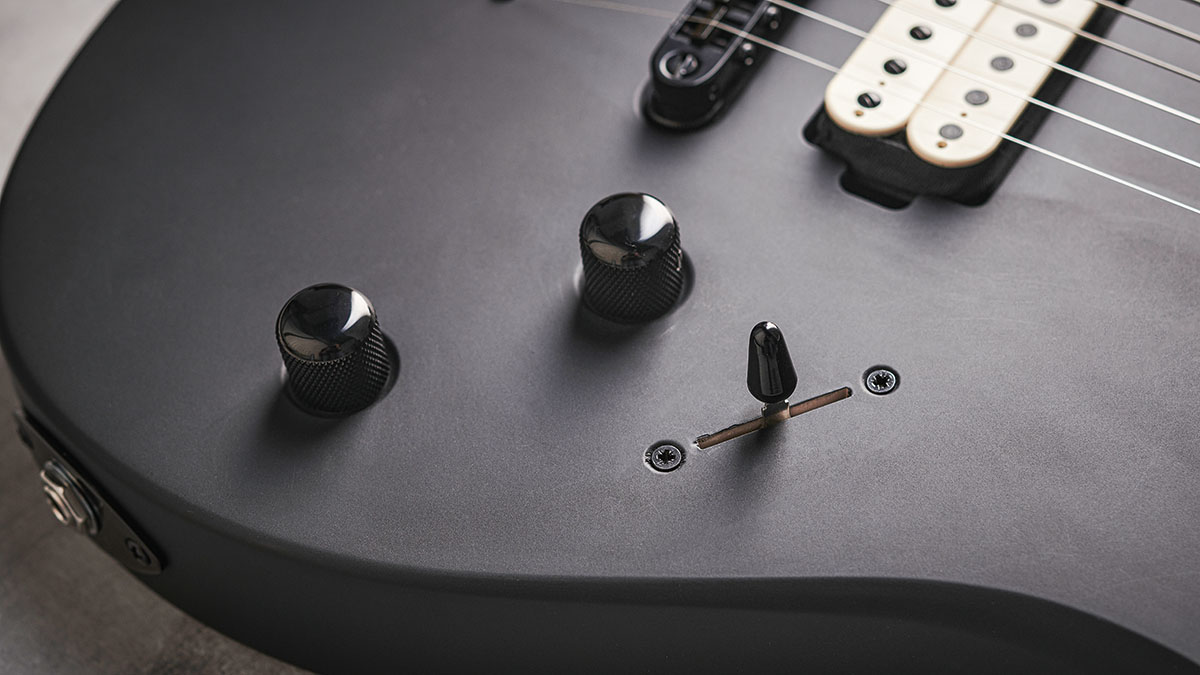
A danger of many new designs is a plethora of bells and whistles on the switching front. But the ORYX feels very player-led with a simple master volume and tone setup (with knurled metal control knobs, a subtle tie-in with those custom tuner buttons and, again, slightly recessed into the top), meaning the trickery comes from the custom-designed three-position Free-Way blade selector switch, which rocks between series humbucking with the switch pushed away from you, and parallel humbucking with it moved upwards.
Nolly’s Bare Knuckle Polymath pickups are direct-mounted to the body, the bridge pickup with a little height adjustment, while the neck seems like it’s beeen screwed down solidly. On the one hand it seems like a very simple design, but that’s a little deceptive as it really does seem extremely considered.
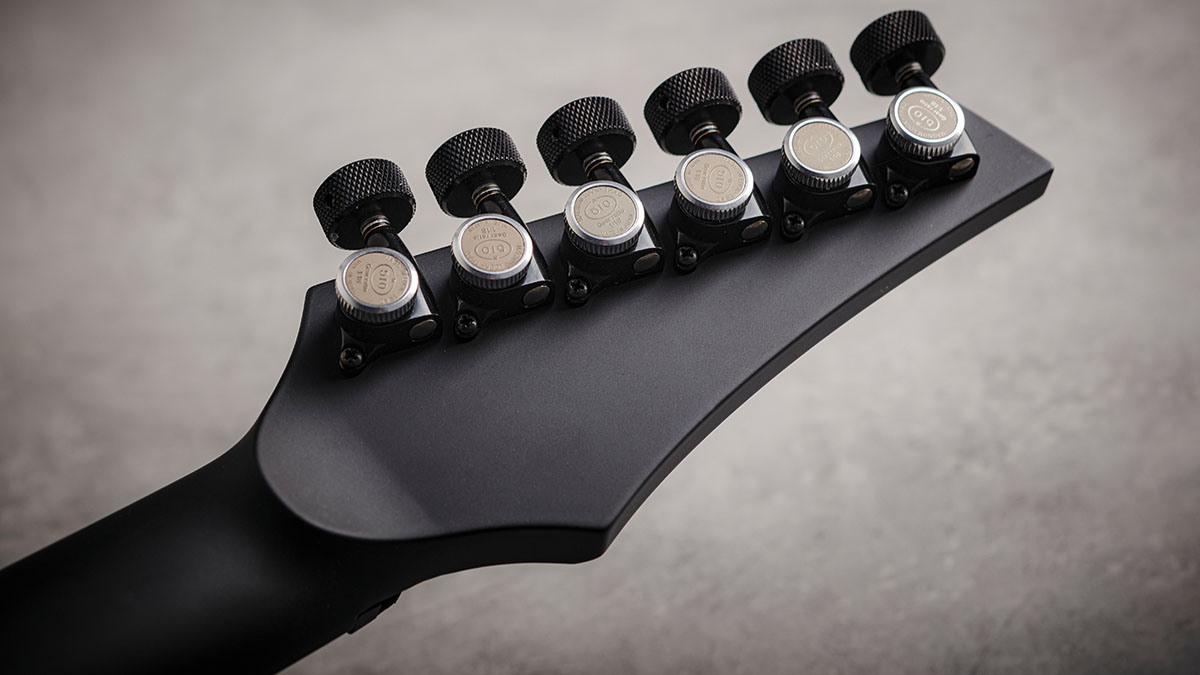
Feel & Sounds
The guitar is based on a full Fender scale, but that long upper horn means that the neck sits into your body a little more than, say, a Stratocaster and almost creates the feel of a shorter-scale guitar. Either way, it hangs superbly on a strap, too; it disappears, really, as any great design should.
Manson describes the neck shape as a ‘Modern D’ and it’s more Gibson-esque in width. Our sample measured slightly over 43mm at the nut with 35.5mm string spacing. The tune-o-matic has pretty standard 51.5mm spacing, so there’s plenty of air without the neck feeling over-wide or the strings being too close to the edges.
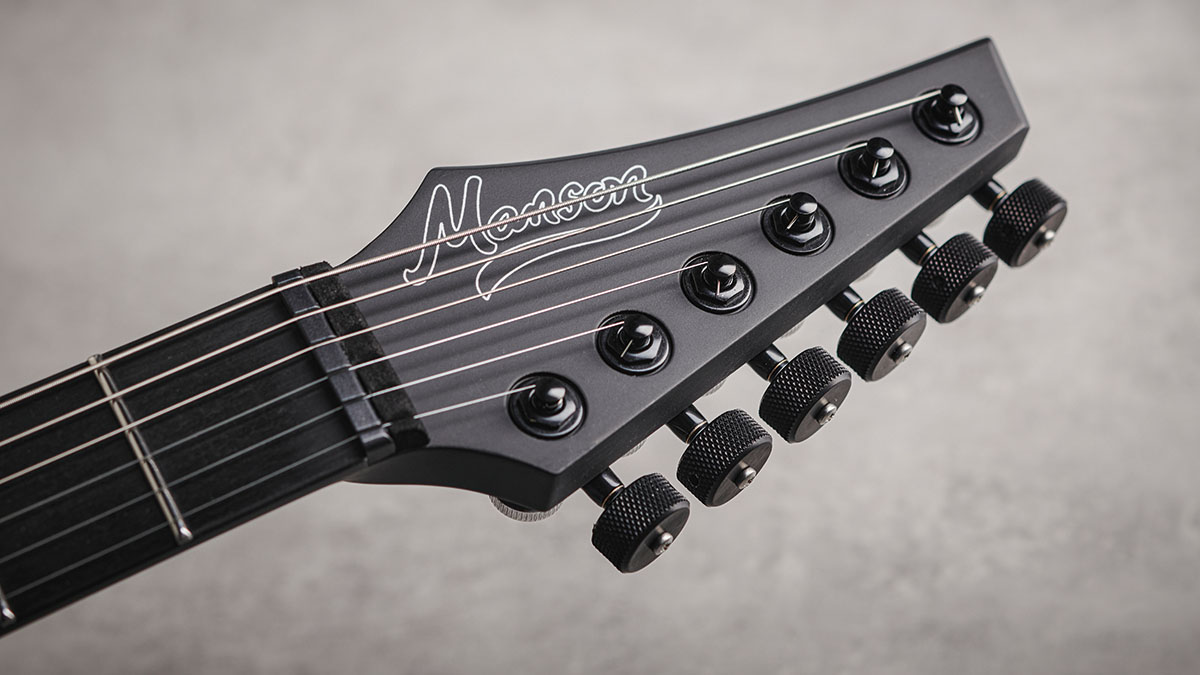
It’s pretty skinny in depth (18.5mm at the 1st fret and just 19.7mm by the 12th) yet there’s minimal flex and we suspect that the hard Richlite is playing its part in terms of rigidity. The D shape means there’s very little shoulder and there’s a slightly flat back, again to suit thumb-behind left-hand positions, not dissimilar to a classical guitar, which can often have a similar shaping.
The super-smooth frets measure approximately 2.75mm wide by 1.47mm high, which means there’s plenty of height to really dig into the strings for bends, but they don’t feel too big. While that neck shape won’t be to every player’s taste, it is super fast, with a pretty low string height of 1.27mm on the treble side and 1.5mm on the bass with minimal, if any, relief.
The whole guitar is aimed at the contemporary high-gain rock-to-metal player; head over to YouTube to see Nolly illustrate that style with serious panache. But you’d be very wrong to pigeonhole the ORYX as a one-trick pony. We spent plenty of our test time with a pretty clean amp, and if big rounded cleans are your thing, we’d recommend these pickups, something that a player such as Mike Stern or Charlie Hunter could use.
The highs are rounded but not indistinct, the bass end is certainly not overdone, while the midrange sounds broad without the sort of nasal peak of many medium or higher-output ’buckers – it’s a rich, sonorous voice that loves a pedalboard.
In parallel mode (a lesser used alternate function than, say, the usual coil-split), not only are the pickups hum-cancelling but they move to a thicker single-coil-like voice with a little drop in volume and slightly less body.
There’s no hint of shrillness to the humbucker voices, they come across as big and vocal-sounding, while the parallel voices lighten the voice for slightly more articulation
With various light and heavy gains, the ORYX excels. There’s no hint of shrillness to the humbucker voices, they come across as big and vocal-sounding, while the parallel voices lighten the voice for slightly more articulation, which works especially well to us on lower gains, adding some almost P-90-like texture. Combined with the super-fast, effortless playability, this is quite a revelation. Superb craft at a very high level.
Don’t forget those volume and tone controls, though. Like every other facet of the guitar they’re well considered. The volume is smoothly tapered and just subtly pulls back the highs without losing them when reduced. The tone cap (see Under The Hood on the previous page) is well voiced and pickup hum is no problem in any setting because both series and parallel modes are noise-cancelling.
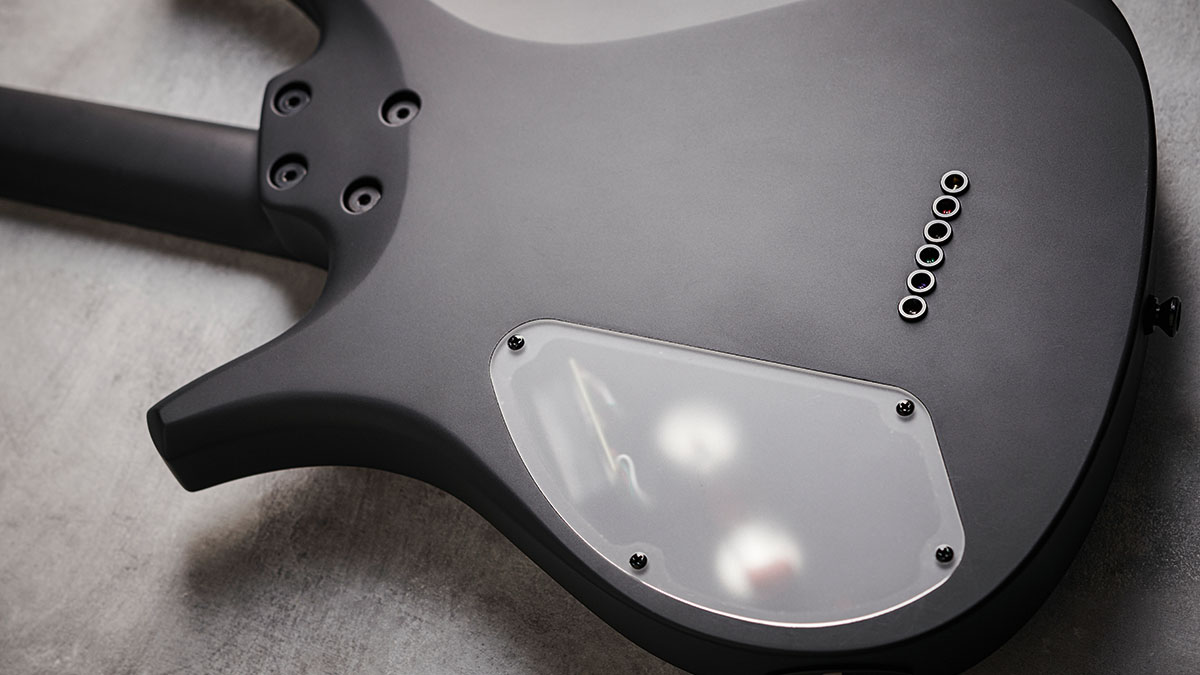
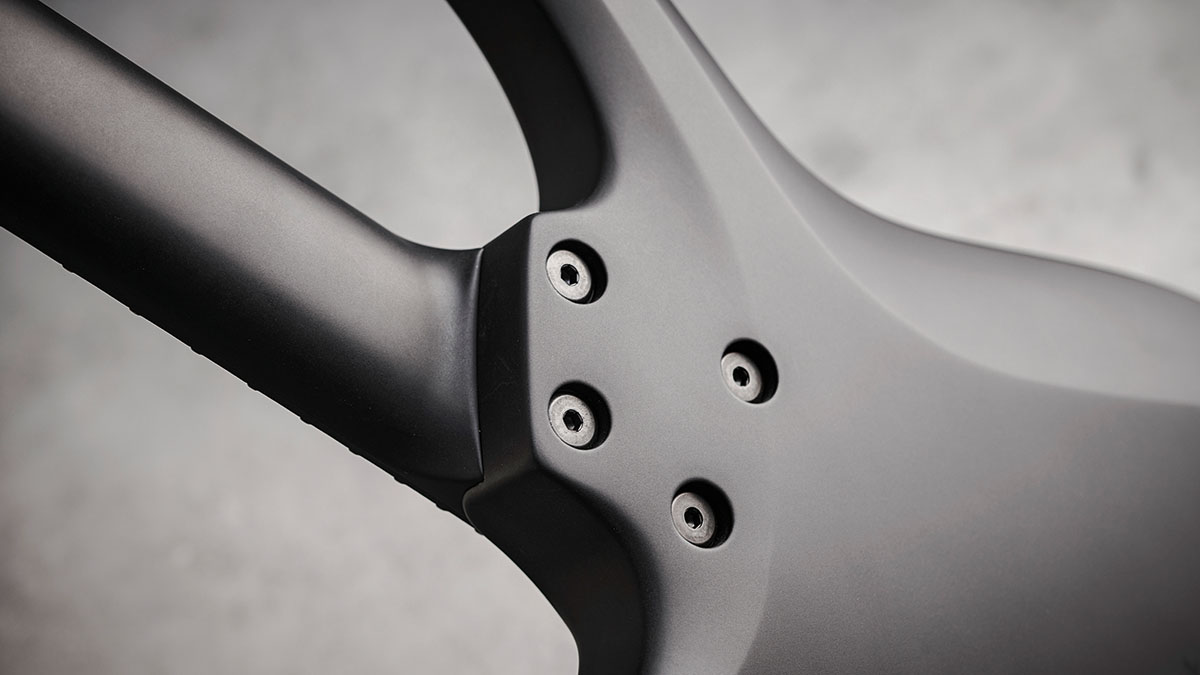
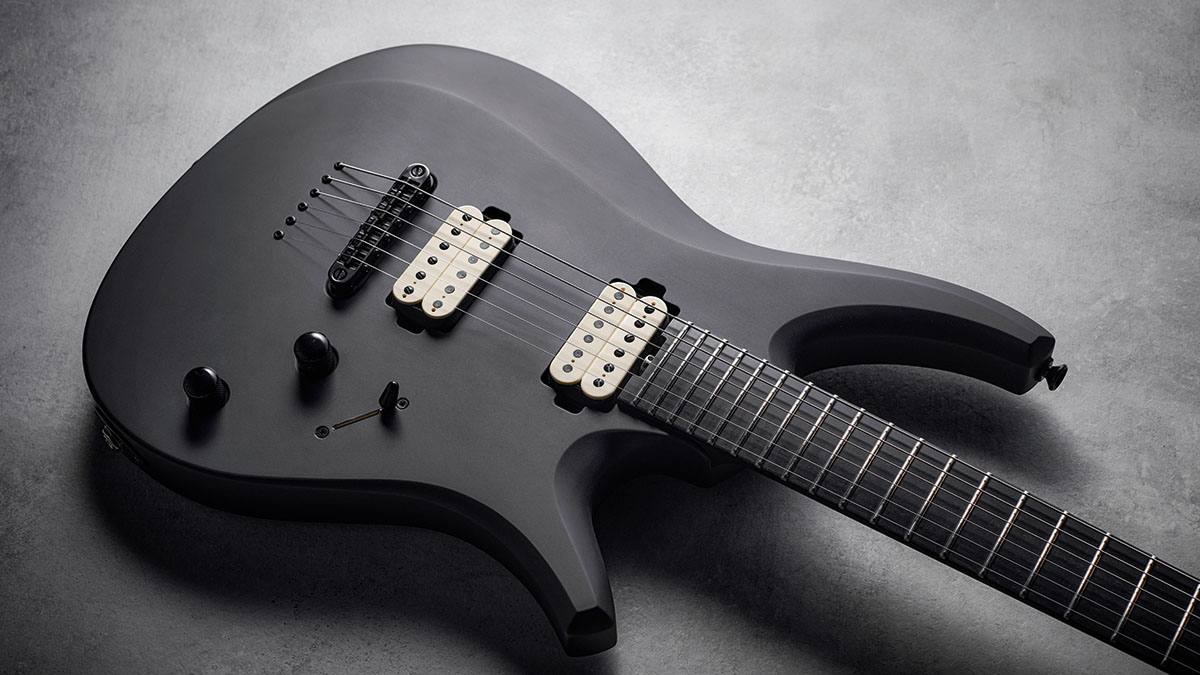
Verdict
Hugh Manson may have retired from this guitar-making lark, but his legacy is very evident in this design. He taught his students well, and like any other high-level Manson instrument we’ve played it’s very much function over style.
It’s a superb ringing and sustaining instrument that, when paired with these Polymath pickups, creates a package that might be aimed at progressive players yet easily slips into more classic rock with little more than a volume reduction. And, like we said, if big round cleans are your aim, you need to hear these pickups.
We do only get two colours in this launch edition for both this six-string and its seven-string partner. And it’s far from a cheap date, either. But the uncompromising quality and experience-led design make it one of the most beguiling instruments we’ve had in our hands for some time.
Specs
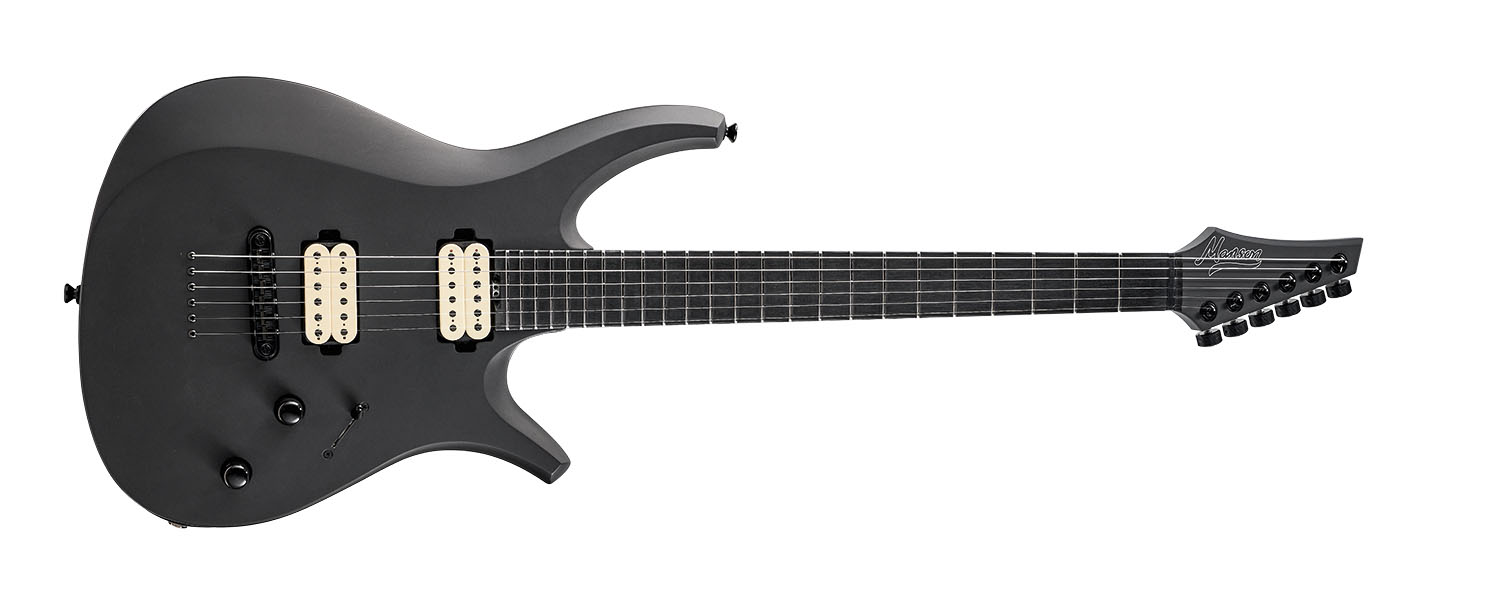
- PRICE: £2,899 (inc gigbag)
- ORIGIN: UK
- TYPE: Double-cut bolt-on solidbody electric
- NECK: American hard maple, bolt-on
- SCALE LENGTH: 648mm (25.5”)
- NUT/WIDTH: Black Graph Tech/ 43.24mm
- FINGERBOARD: Richlite, ‘hyper glow’ side dots, 305mm (12”) radius
- FRETS: 24, Jescar stainless steel
- HARDWARE: Tone Pros T3BT locking tune-o-matic bridge (recessed), Gotoh 510 Magnum Lock tuners with custom knurled metal buttons
- STRING SPACING, BRIDGE: 51.5mm
- ELECTRICS: 2x Bare Knuckle Polymath humbuckers,
Freeway/Manson 6-position pickup selector switch, master volume and tone controls - WEIGHT (kg/lb): 3.25/7.15
- OPTIONS: The 7-string ORYX VII costs £2,999
- LEFT-HANDERS: Not currently
- FINISHES: Dry Satin Black (as reviewed), Satin Metallic Green
- CONTACT: Manson Guitar Works

Dave Burrluck is one of the world’s most experienced guitar journalists, who started writing back in the '80s for International Musician and Recording World, co-founded The Guitar Magazine and has been the Gear Reviews Editor of Guitarist magazine for the past two decades. Along the way, Dave has been the sole author of The PRS Guitar Book and The Player's Guide to Guitar Maintenance as well as contributing to numerous other books on the electric guitar. Dave is an active gigging and recording musician and still finds time to make, repair and mod guitars, not least for Guitarist’s The Mod Squad.
“What blew me away was that everyone wanted the curly maple top. People were calling, saying, ‘I’ve got to have the bird inlays’”: Paul Reed Smith on raising the Standard 24, finally cracking the noise-free guitar and why John Sykes is a tone hero
“It combines unique aesthetics with modern playability and impressive tone, creating a Firebird unlike any I’ve had the pleasure of playing before”: Gibson Firebird Platypus review
